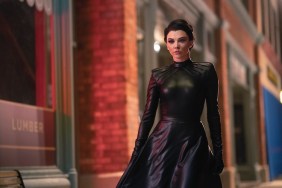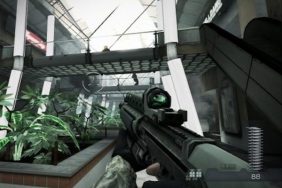Shigeru Miyamoto came up with The Legend of Zelda after spending years of his childhood exploring the woods behind his house, and had those woods been haunted, cursed, and overrun by hellish monsters, he may very well have come up with Dark Souls instead. Though it’s difficult to expect any game to repeat the perfect blend that was the original Dark Souls, Dark Souls 2 does a commendable job of rendering the series just the slightest bit less ruthless for new players. While this will be a negative for hardened veterans, the upshot is a fair trade-off; a far broader world, extremely clever plot-relay, colossally formidable bosses, and of course, plenty of death. You may not die as often, but when you do fall, it will be devastating. In some cases more so than ever before.
To start, it’s important to be aware of From Software’s most noteworthy changes. The first thing you’ll notice is that it actually is possible to slowly rid the world, Drangleic, of monsters. This is no small task, as slain creatures will regenerate when you die, but unlike last time around, it’s no longer a continuous cycle. Defeat certain enemies enough times, and they won’t return, even if you’re killed shortly after.
It makes sense, really. It’s not as if beasts are using the same life-restoration techniques as the player, and since this makes the game a bit less brutal while simultaneously adding to realism in a roundabout way, I had no major qualms with it. It even adds challenge on the backswing; when you die, you lose souls, but you won’t be able to retrace your steps more than once to get them back. If you know the monsters in an area are on their last regeneration, you’ll actually take extra care not to die, because if you do, the experience (and currency, for that matter) you netted will soon cease to exist. It’s an overall smart change with an unexpected side effect, and though it lowers difficulty a hair, it feels strangely satisfying to rid the world of its foul beasts.

Though you can still stop to rest at bonfires for a break or a quick potion, the hub you’ll be frequenting is named Majula, a small coastal town where something isn’t quite right — as if anything about the series is comforting. Of course, this is more a symptom of Drangleic’s endless occulted mysteries than the town itself, and as you return-visit Majula over the course the game you’ll see it adjusted and altered in interesting ways. Often, rescued NPCs will appear there hours later to offer gratitude and services, while early on the town is where you’ll do most of your shopping. Eventually, you gain ways to conduct your dealings elsewhere, but even so, Majula is the only place to level up, so returning remains a must.
The constant check-ins may sound like a bit of a hassle, but they’re actually made quite easy by the game’s fast-travel system. At first this had me highly skeptical — is it even possible to implement such a thing without a big-time compromise on realism? Thankfully, the effects on immersion are minimal, and the convenience payoff is massive. The player can hop between any discovered bonfires in the game, and the change has lifted what I’d wager was a major limitation of From Software (whether they realized it or not) when designing the first game. Knowing the player can get anywhere at any time, they’ve gone ahead and made the game world truly expansive. Villages and outcropping dot the coasts of Drangleic, while winding networks of caves and pathways intertwine on themselves in a remarkably verismic fashion. It may not be immediately apparent, but when you finally emerge from what seemed like hours of ceaseless trekking through a cursed, monster-ridden labyrinth, only to be rewarded by open sky and the shimmering sea below a windswept cliff side, you’ll realize why this is a good thing.
Such events bring me to Dark Souls 2’s visuals. While the game has its moments in the sun, it’s not even close to being the last-gen visual capstone that, say, Grand Theft Auto V managed to be. You can certainly catch Dark Souls 2 on a good day, where the lighting and perspective are just right, and at those times the visuals hone the game’s overall mood to near-perfection. That said, in many areas textures look blotted and muddy, and while the darkest, eeriest corners of the word often contain the best encounters and biggest challenges, they also have a tendency to look the worst. It could be better, but it’s also not something I explicitly blame From Software for either. It’s just the way it is.
Perhaps the most strongly-felt presence in Dark Souls 2’s word are its bosses, and they absolutely do not disappoint. Well, I should rephrase: they do disappoint, in that they will utterly crush your in-game morale on more occasions than one. I don’t care how thorough you are, how well you prepare, or how much you needlessly grind in preparation for enemies not-yet-seen, you will be decimated by a boss at least once. Knowing this, you’ll find that bosses rarely frustrate, which is a feat in itself. Instead, they force you to think. Is there a way I can fine-tune my stats or current configuration just the tiniest bit to give me an edge? An edge is all you need, too; after many trials and adjustments against the same lumbering foe, you’ll often will uncover an approach or slight tweak that utterly turns the tables. Sure, there will also be times you’ll have to leave and come back later, but when you do outsmart an opponent by thinking outside the box, it’s immensely satisfying.
Dark Souls 2 is a worthy sequel that successfully lessens its forebear’s brutality without compromising the bragging rights that those who triumph its fair but unforgiving design earn the right to. For that alone, it’s a nail-biting experience that retains your interest even in the face of failure. It carries the flag for its predecessors, but the face of the series is beginning to show age; last-gen hardware has restricted its growth. New tweaks like fast-traveling and permadeath of monsters takes away some of the mystique while also giving the game a new flavor. If you’ve never played Souls before, then there couldn’t be a better entry point, but return visitors — though sure to get their money’s worth — will come to appreciate the original Dark Souls’ singular brilliance.

Griffin Vacheron is a Writer for CraveOnline. You can follow him on Twitter @novacav.
PS3 copy provided by publisher. Game is available on PS3 and Xbox 360. A PC version will be released on April 25th.








